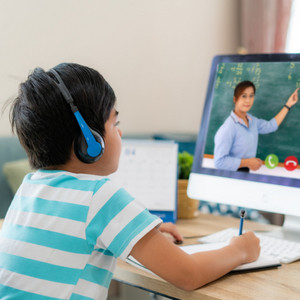Acceptable Use Policies (AUPs) for Schools
The internet can be a double-edged sword – powerful and effective as a learning tool, but if not used intentionally, a threat to students’ safety and privacy. As more and more schools switch to online teaching or hybrid learning, the need to ensure digital safety and privacy of students also rises. One of the best ways of keeping students safe is to implement a Acceptable Use Policies (AUPs) for schools.
Understanding Acceptable Use Policies (AUPs)
An AUP is a written contract listing terms and conditions explaining the acceptable uses of internet for schools and classrooms. These policies are prepared by school administrators and teachers in collaboration and can:
- Help schools monitor and avoid liabilities caused by school sanctioned internet activities.
- Safeguard digital privacy and safety of students.
- Provide students with guidelines for internet use, school devices, interactions and practices.
Parents and students can be given copies of the policy to read through and sign to demonstrate their acceptance and agreement of rules. The AUP can include responsibilities that parents will have as well.
Key Parts of an Effective AUP
There are six elements to consider when composing an AUP:
- Preamble: This section introduces the AUP and explains the need for the policy, acknowledges the risks of the internet, states privacy goals, and explains the development process of the policy.
- Definition: Any key terms used in the policy are defined and explained in this section.
- Policy Statement: This statement describes the services covered by the policy and mentions the situations under which device and internet may be used for students. It includes:
-
- A statement on the educational benefits and advantages of internet use.
- A statement reinforcing the message that the school will limit student access to content which does not adhere to educational goals to regulate student safety and privacy.
- Description of instructional strategies that are supported by and require access to internet.
- The elements of responsible digital citizenship such as digital access, communication, etiquette, plagiarism and crediting sources.
- A list of responsibilities of each member (student, staff, school and parents) using the internet.
- Section on Acceptable Uses: This section provides guidelines to students describing the acceptable and appropriate uses of internet related to school.
- Section on Unacceptable Uses: This gives clear examples of unacceptable uses of the internet, such as:
-
- Sites that are required for student interactions.
- Student sharing and posting of inappropriate content especially with the intent to harm and disrespect others.
- Violation Section: This piece discusses how students can report violations of policy and/or the consequences that students might face if they fail to comply with rules.
Teachers can also prepare acceptable use policies that focus on educating students about digital safety measures. When designing these policies, teachers must ensure that the policy strikes a balance between freedom and responsibility to encourage students to become digitally responsible for their own safety.
Finding the Right Balance
Your AUP should protect students while helping them learn. Therefore:
- Teach good habits instead of just making rules
- Show students how to be good digital citizens
- Help them think critically about online choices
- Give clear guidelines but some freedom to learn
Want to Learn More?
Learn more about Acceptable Use Policies (AUPs) for schools and how to create safe digital spaces where students can thrive with the online staff development class: Internet Safety in a Connected World.
2025 Editor’s Note: We’ve updated this guide with the latest digital safety practices, drawing from recent online and hybrid learning experiences.
 About the Author
About the Author
Ellen Paxton is a respected expert in education and best known as the Chief Learning Officer of Professional Learning Board. As a two-time National Board Certified Teacher, Ellen has successfully published and customized online professional development courses and Learning Management Systems for 20 years to help teachers meet their state continuing education renewal credit requirements. Through ProfessionalLearningBoard.com, RenewaTeachingLicense.com, and ConnectedPD.com. Ellen has established solutions and maintained partnerships with several accredited universities, higher education institutions, teachers’ unions and state Departments of Education while setting strategic direction that makes a difference and overseeing implementation of popular online PD.

Comments are closed.